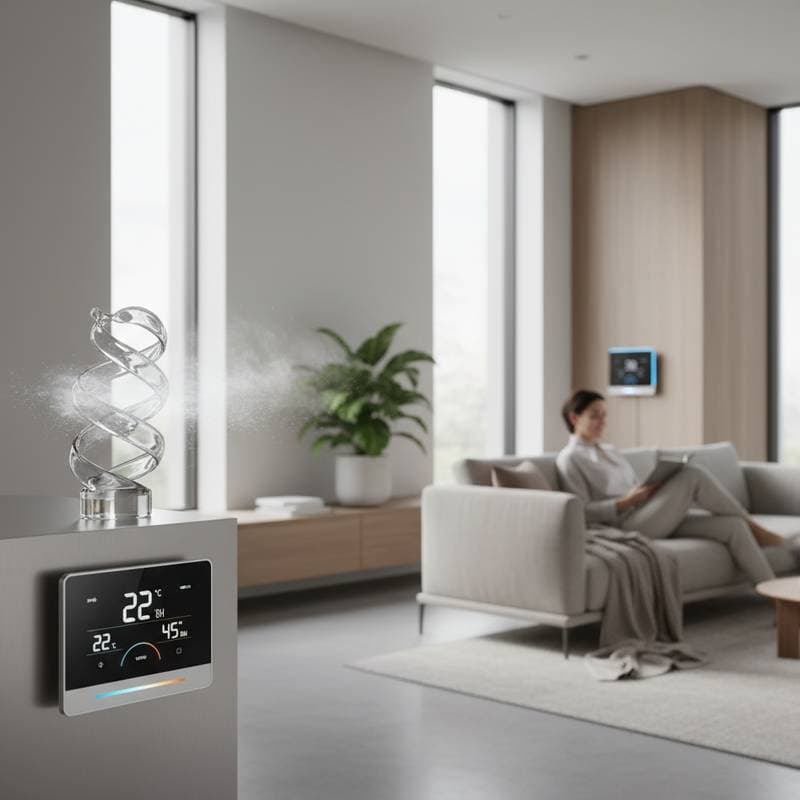Understanding the Humidity Challenge in 2025
Climate patterns shift, and 2025 brings heightened humidity across many regions. Standard air conditioners focus primarily on cooling air temperature, yet they often fall short in managing excess moisture. This leads to homes that feel clammy and promote mold growth, even when the thermostat reads a comfortable setting.
Humidity refers to the amount of water vapor in the air, measured as relative humidity. When levels exceed 60 percent indoors, discomfort increases, and energy bills rise as AC units cycle more frequently. Projections for 2025 indicate warmer temperatures combined with increased atmospheric moisture, exacerbating these issues for homeowners.
How Traditional AC Systems Respond to Humidity
Air conditioners remove some humidity as a byproduct of cooling. The evaporator coil condenses moisture from warm air passing over it, draining the water away. However, in high-humidity conditions, this process proves insufficient.
Units designed for moderate climates struggle when outdoor humidity surges. The AC cools the air but leaves residual moisture, causing the system to work harder without achieving true dryness. Over time, this inefficiency shortens equipment lifespan and elevates operational costs.
Homeowners notice persistent mugginess, especially in basements, bathrooms, and kitchens. Without targeted moisture control, these spaces become breeding grounds for allergens and structural damage.
The Impact on Home Comfort and Health
Excess indoor humidity disrupts daily life. Fabrics feel damp, electronics risk corrosion, and sleep quality declines in sticky bedrooms. Families experience heightened allergy symptoms from dust mites and mold thriving in moist environments.
Energy consumption spikes as AC systems run longer to combat the sensation of warmth caused by humidity. A study of household patterns shows that homes with poor humidity control use up to 30 percent more electricity during peak seasons. This not only strains budgets but also contributes to broader environmental demands.
Beyond comfort, unchecked humidity poses health risks. Respiratory issues worsen, and wood furnishings warp under prolonged exposure. Addressing these effects requires moving beyond basic cooling.
Introducing Whole-Home Dehumidification Systems
Whole-home dehumidifiers integrate seamlessly with existing HVAC setups to target moisture directly. These systems pull humid air across specialized coils, extracting water vapor and returning dry air to living spaces. Unlike portable units, they provide consistent coverage throughout the entire house.
Advanced models feature smart sensors that monitor and adjust humidity levels automatically, maintaining 40 to 50 percent relative humidity for optimal comfort. Installation typically connects to the central ductwork, ensuring even distribution without disrupting aesthetics.
Benefits extend to energy savings. By reducing the AC's workload, these systems lower overall power usage while extending equipment longevity. Cleaner air results from minimized mold and allergen growth, fostering a healthier indoor atmosphere.
Key Features of Effective Dehumidification
Select systems with variable-speed fans for quiet, efficient operation. Built-in filters capture particles, improving air quality alongside moisture removal. Capacity ratings, measured in pints per day, should match home size; for example, a 2,000-square-foot residence needs at least 70 pints daily removal under high-humidity conditions.
Integration with thermostats allows for precise control. Some units offer remote monitoring via apps, alerting owners to maintenance needs. Professional sizing ensures the system handles 2025's projected peaks without overworking.
Durability matters in humid environments. Look for corrosion-resistant components and annual service recommendations to sustain performance.
Steps to Upgrade Your Home for 2025
Assess current humidity with a simple hygrometer, available at hardware stores. Readings above 60 percent signal the need for intervention. Next, inspect for signs like condensation on windows or musty odors.
Consult HVAC professionals for a home evaluation. They analyze ductwork, insulation, and local climate data to recommend suitable dehumidification options. Budget for installation, which ranges based on system complexity but delivers long-term value.
- Schedule an energy audit to identify inefficiencies.
- Choose a system compatible with your existing AC.
- Plan for ventilation improvements, such as exhaust fans in high-moisture areas.
- Test the setup post-installation to verify balanced humidity.
Maintenance involves cleaning filters quarterly and draining collected water. These habits prevent breakdowns and maximize benefits.
Achieving Lasting Indoor Balance
Investing in whole-home dehumidification prepares your space for 2025's demanding conditions. Families enjoy drier, fresher air that supports well-being and reduces utility expenses. Comfort transforms from a seasonal luxury to a year-round reality.
Professional guidance ensures tailored solutions that align with your home's unique needs. Embrace these advancements to stay ahead of rising humidity trends and maintain an inviting living environment.



